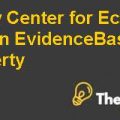Contemporary Developments in Management Accounting Case Study Help
Introduction
Management practices are significantly shaped by several forces today including the pace of change, social expectations, technology, diversity, and globalization. Different management theories have evolved, emerged and practiced in various business environments.
It is important to embrace appropriate contemporary development instead of tradition management theories to enhance the business activities like planning, monitoring and decision making. These new practices try to institute goals that are align with the interest of stakeholders, employees, customers and investors. Thus acquiring the contemporary development approach would be benefit the organization effectively.
Objective Key Results (OKR) Development
One of the contemporary development that is used in performance management by the organization to manage and set the goals and track the growth towards accomplishment of the set goals is Objective Key Results (OKR). The theory behind OKR is based on the concept of goal-setting theory, which suggests that setting specific, challenging goals can lead to increased motivation, performance, and achievement. By providing a framework for setting and tracking goals, OKR helps organizations achieve better alignment and focus, while promoting transparency and accountability.
Key Features of OKR
Objectives
Objectives are high-level goals that define what an organizations wants to achieve. These objectives should be ambitious, specific and measurable.
Key results
Key results are specific, measurable outcomes that help tack progress towards the achieving the objectives. The key results should be specific, measurable and time-bond.
Alignment
OKR is designed to align individual and team goals with organizational objectives, ensuring that everyone in the organization is working towards a common goal.
Regular check-ins
OKR encourages regular check-ins and progress updates, providing an opportunity to adjust goals and priorities as needed.
Supporting the Strategic Decisions
While OKR has been adopted by many organizations mainly technology industry it can be adopted in any industry or function. The practices, enablers and adoption hurdles associated with OKR are discussed below.
Practices
- Setting ambitious and measurable goals that are align with the organization’s strategy.
- Breaking down goals into smaller, measurable objectives that can be tracked over time.
- Assigning key results to specific individuals or teams and holding them accountable for achieving those goals.
- Regularly reviewing progress against objectives and key results to identify areas for improvement.
Adoption hurdles
- Resistance to change from existing performance management systems.
- Difficulty in aligning individual and team goals with organizational objectives.
- Lack of clarity or understanding around how to set effective objectives and key results.
Enablers
- Strong leadership support for OKR adoption.
- Clearly defined organizational objectives and strategy.
- Training and development programs to help employees understand and effectively use the OKR framework.
Analysis of the OKR development
A strategic analysis of the OKR comparing to the traditional management practices would be helpful to determine the OKR development approach’s appropriateness, limitations and problems.
Appropriateness compared to the traditional management practices
Appropriateness of OKR development as compared to existing management techniques are as follows.
Alignment: Traditional management accounting techniques focus primarily on financial metrics, which can lead to a narrow focus on short-term financial outcomes. OKR, on the other hand, helps align financial and non-financial metrics, ensuring that everyone in the organization is working towards a common goal.
Accountability: Traditional management accounting techniques may lack accountability, as it can be difficult to tie specific financial outcomes to individual or team performance. OKR helps to drive accountability by assigning specific objectives and key results to individuals or teams and holding them accountable for achieving those results.
Communication: Traditional management accounting techniques may lack communication and collaboration, as financial metrics may not be easily understood or communicated across the organization. OKR helps facilitate communication and collaboration by creating a shared language and understanding of the company's goals and objectives.
Limitations or problems associated with OKR
The following are the problems and limitations associated with the OKR development strategy.
- Setting effective objectives and key results can be challenging, and may require a significant investment in training and development for employees.
- The OKR framework can be complex and difficult to implement, particularly for organizations that are not used to working with performance management frameworks.
- The focus on specific, measurable outcomes in OKR can create incentives for employees to game the system, focusing on achieving the specific outcomes rather than working towards the broader organizational objectives..........
- Contemporary Developments in Management Accounting Case Study Help
This is just a sample partial case solution. Please place the order on the website to order your own originally done case solution.













